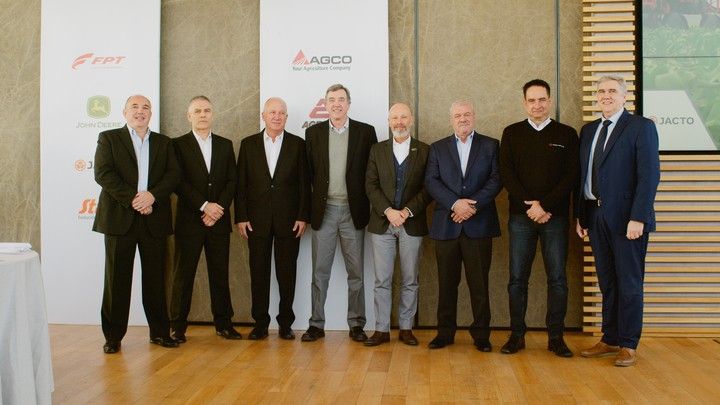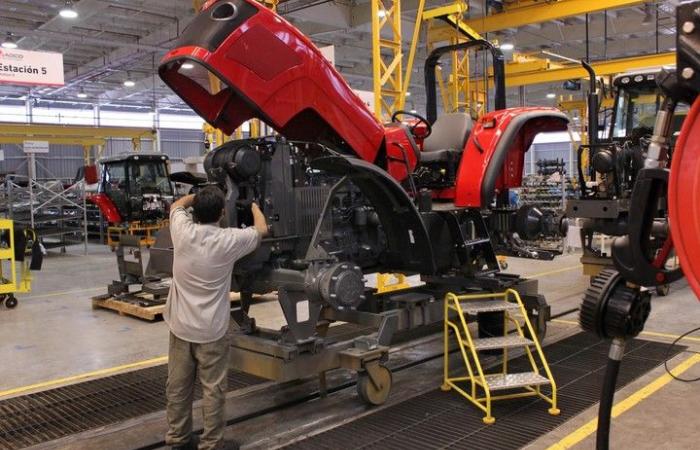This week, the Association of Argentine Tractor and Other Agricultural and Industrial Equipment Manufacturers (AFAT) celebrated its 50th anniversary, representing the multinational agricultural machinery companies: AGCO, Agrale, CLAAS, CNH, FPT; John Deere, Jacto and Stara.
The member companies own 12 industrial plants, located in Buenos Aires, Santa Fe and Córdoba, where they manufacture tractors, harvesters, sprayers, engines and implements. Employs 16,700 people: 2,700 directly, 5,500 in the distribution network and 8,500 indirectly.
In 2023 these factories, through their different brands, represented 80% of tractor patents; 97% of harvesters, 100% of forage harvesters, and 58% of sprayers. The turnover of the 8 companies in 2023 was almost US$ 1.8 billion and exported US$ 415 million.
“Today we have a very big challenge as an association and as a country. We are in a year of very low sales volume, 30% below 2023. At the same time, we have a very strong and distorting tax pressure that penalizes manufacturing and exports,” he began by explaining Sergio Fernandezwho is the new head of Afat since May.
“The first semester was quite complicated and the second semester too it comes a little cold. Margins are very tight for producers today, as implementation costs were high and commodity prices are not at their best. Some even have debts from the past drought, so There is no great appetite for investment in capital goods”he explained.
“Funding has started to free up a bit and this can help, but I see an industry that will be between 20 and 30% less compared to last year, which had already decreased,” added Fernández, who is also the president of John Deere.
Given this lower sales, he warned that There are scheduled stops at the plants due to the adjustment of the production volume, which implies suspensions or reduction of hours. “In Argentina we get used to these values because the cycles are very variable, but anywhere in the world it is a tragedy”.
However, Fernandez has a positive outlook for what is to come. “We know that what we are experiencing will be resolved,” he said, and looking ahead Fernando VilellaSecretary of Bioeconomy, who participated in the event, said: “We feel very welcomed and we are following the same line and with the intention of solving the problems. We know that this will be the case and we put the companies of this association at our disposal to continue working together.”
One of the points to keep in mind for the manager is that machinery in Argentina is more expensive than in other countriesWhy?: “We have to talk about the Argentine cost that we all know about, about the exchange rate or the distorting taxes, such as the country tax. You see that all of this is on the way to being solved, the Government is working. They listen to you, they know about the problem, it is temporary. If this improves, prices should go down,” he clarified.
 AFAT representatives.
AFAT representatives.Consequently, for the head of AFAT, the renewal of the machinery park “is bordering on obsolescence”. “We have 70-80% of tractors that are more than 15 years old, more than 70-80% of combine harvesters that are more than 10 years old. Obviously, renewing this fleet and incorporating technology is another step on the path to making agriculture efficient and sustainable,” he said.
In this regard, he made a comparison with Brazil, which has a grain production between 80 to 90% more than Argentina, but has a tractor and harvester industry 7 or 8 times larger than Argentina.
He also raised other challenges, such as efficiency and technology. “In 2050, the world will need 40% more food, and there are not enough resources to reach that volume in the way we are producing today. Obviously, we must be more efficient in the use of resources. Our companies, which are global, see this and propose long-term strategies. Strategies in which Argentina is seen as a major player when it comes to feeding the world,” he said.
In this sense, efficiency goes hand in hand with technology. “We have to continue incorporating technology. Our companies invest millions of dollars in research and development of what is known as digital agriculture. And it is impressive what this generates, for example, 30% less seeds using variable sowing or cutting by section. In applications 70% savings thanks to artificial intelligence. And in the harvest, up to 15% less losses. “We make these digital agriculture technologies available to the country.”








